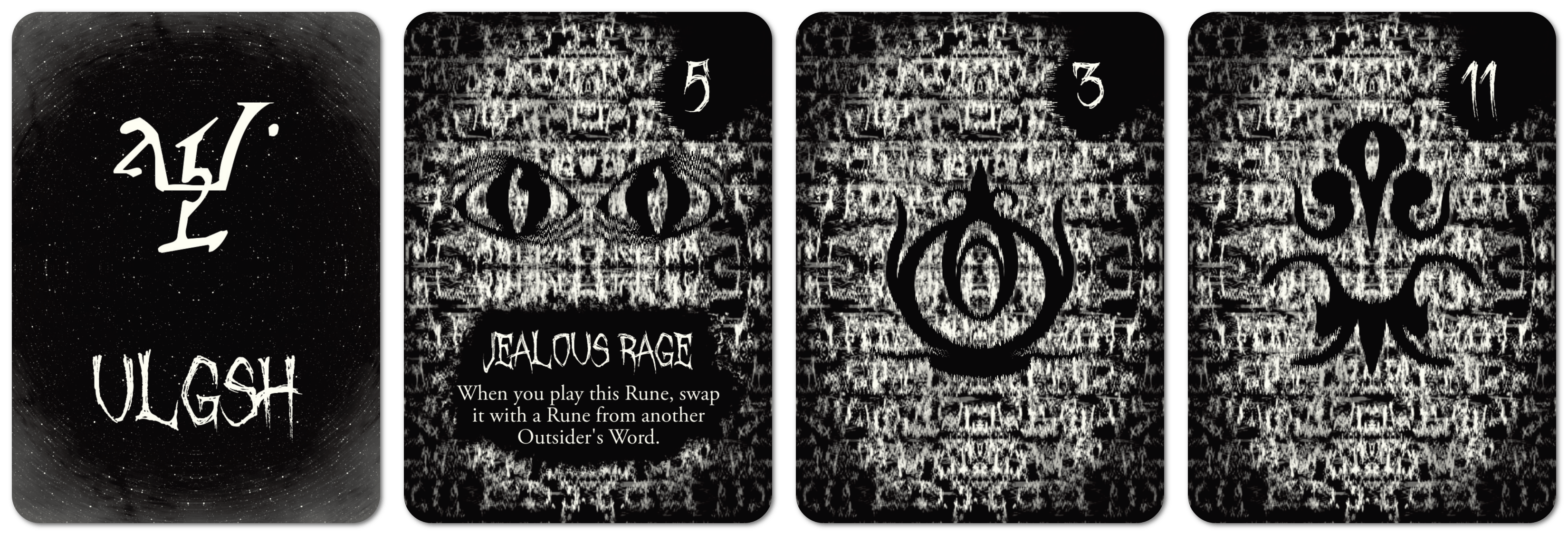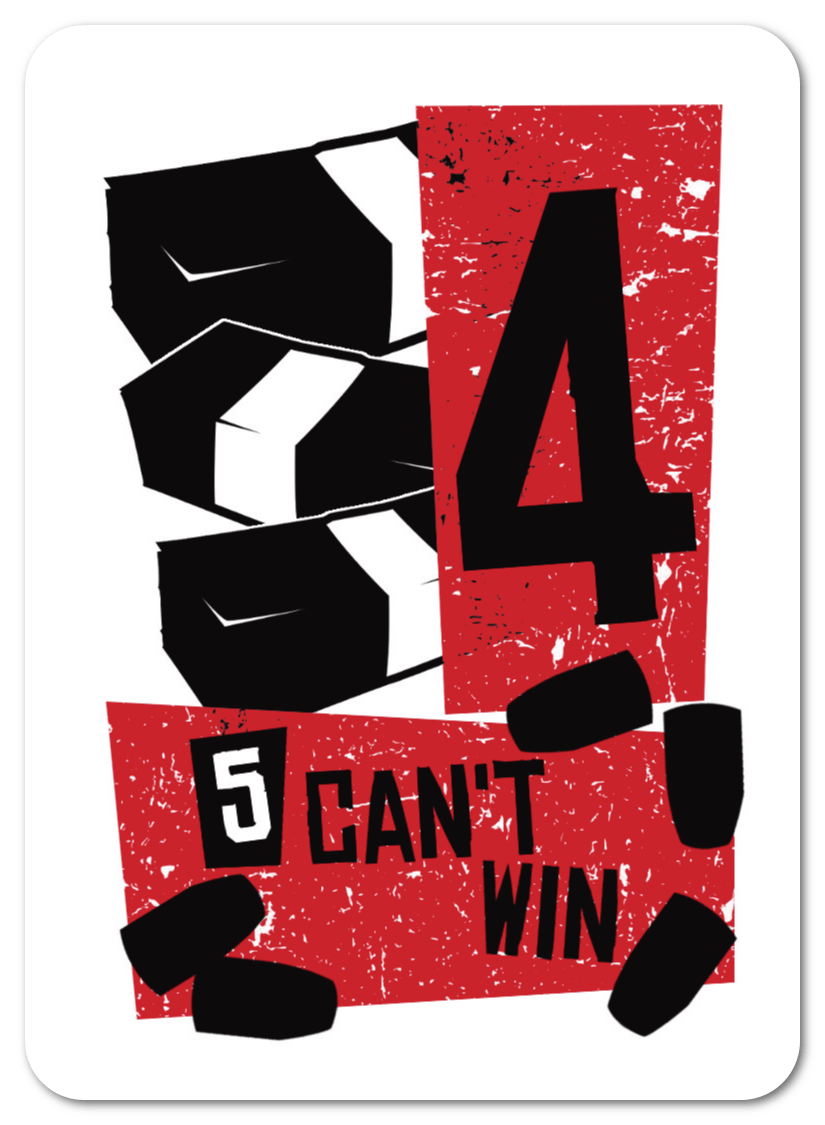Procedurality
I don’t know if anyone else is using this term to talk about this, so here we go, my best effort to try and coin this term so I can talk about it easily.
The Procedurality of a game is the degree to which game pieces imply the existence of one another. That is, when you’re confronted with a game pieces, you can probably extrapolate what the other pieces mean. As a player this determines how you learn and study the strategy, while as a designer, procedurality shows you the extent of a design space.
Here are some examples: In this pretty ordinary poker hand, you can look at the cards and glean some information. First, there are cards that number up to ten, and cards that number down to four. There are numbers on most cards, and there are some different symbols – a heart, a diamond, a club and so on.
In this pretty ordinary poker hand, you can look at the cards and glean some information. First, there are cards that number up to ten, and cards that number down to four. There are numbers on most cards, and there are some different symbols – a heart, a diamond, a club and so on.
Based on just this information, if you’d never seen the deck before, you could probably extrapolate what forty of the cards are, maybe forty-four based on the Jack probably not being totally unique. The design of a deck of cards works with this – there are two jokers, but aside from that, the whole design is contained pretty tightly within the two variables of each card: Value and Suit.

These are cards from a packet of Dark Signs. One of them is very much unlike the others, the area pieces that you’ll play to win. But two of the cards kind of imply the values of other cards, while the third shows that there’s at least some cards in the deck that don’t fit that pattern. The basic runes in Dark Signs represent the lowest sort of procedurality – they show some value that the players will have to deal with, but they aren’t the whole of the game. The procedural cards in Dark Signs show a sort of design space, but they aren’t super obvious. Also, and it’s a small thing, in Dark Signs, the basic runes all have prime number values, which makes them just a little bit trickier to make score ties.
Finally we have the most procedural game I’ve ever made:

There are 26 cards in You Can’t Win and 24 of them are immediately obvious the second you look at any given card. The other two are Wild cards. Each card shows a value, and a rule that relates to cards with that value.
Procedural games are a good place to get started. It helps you get your mind in the space of working out how many cards you need, and if you do it right it can help you explore spaces, defining boundaries by how many different permutations you need of an effect.